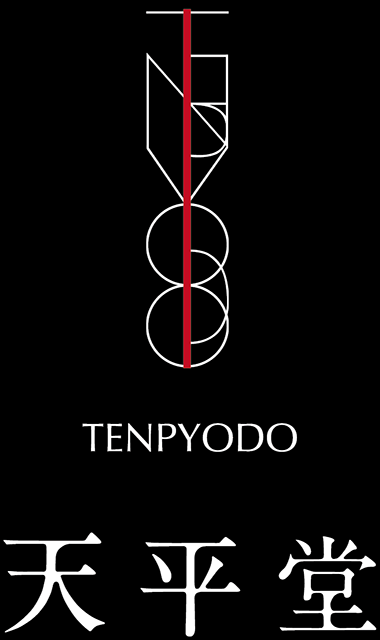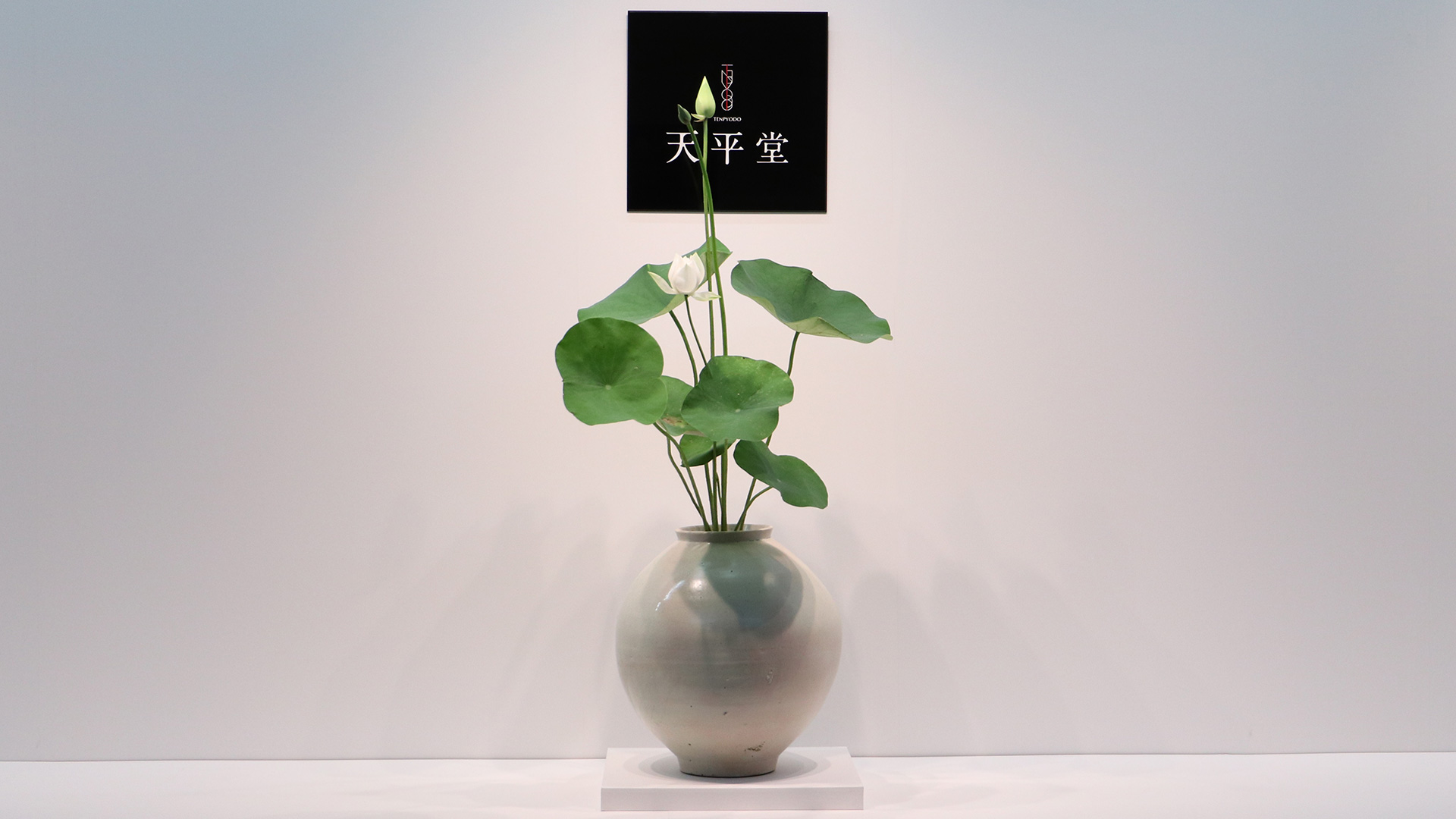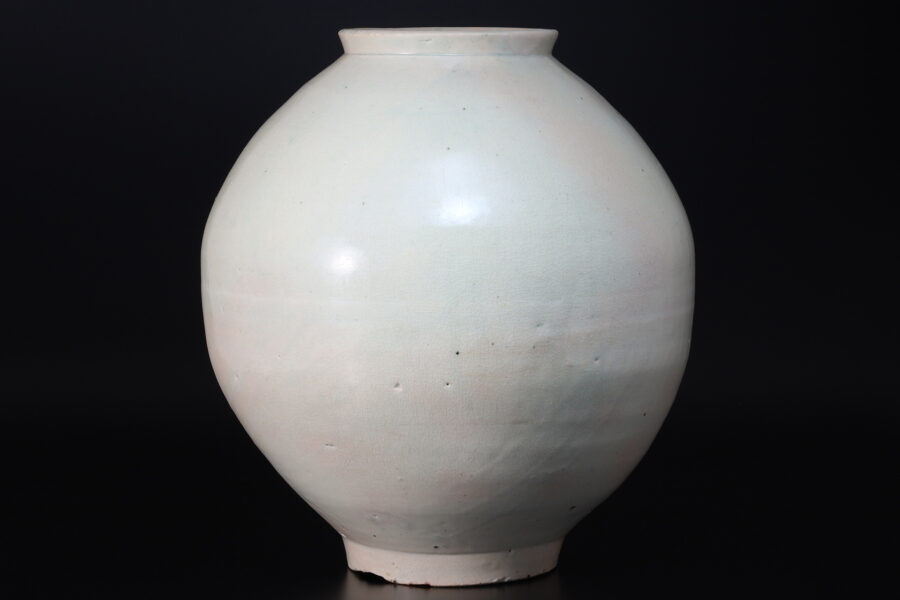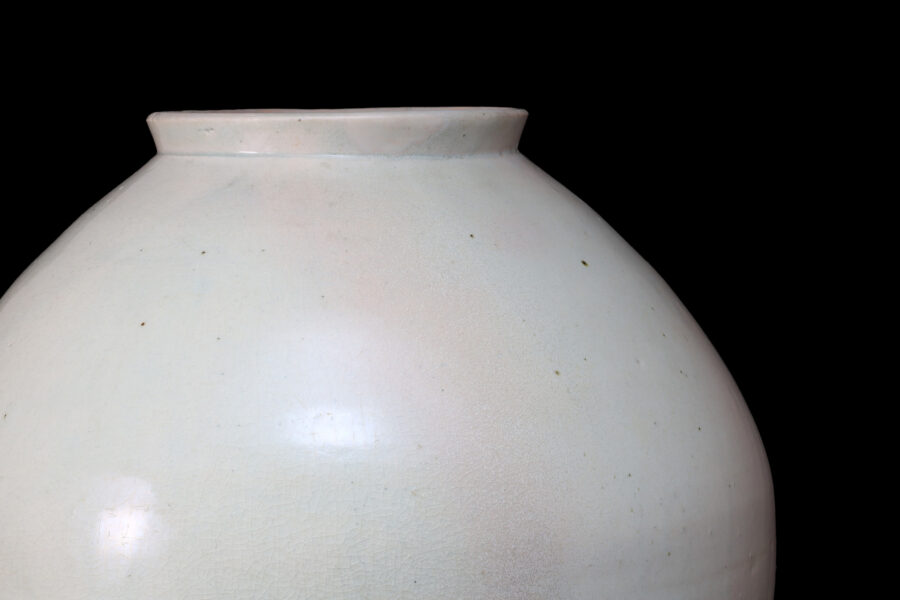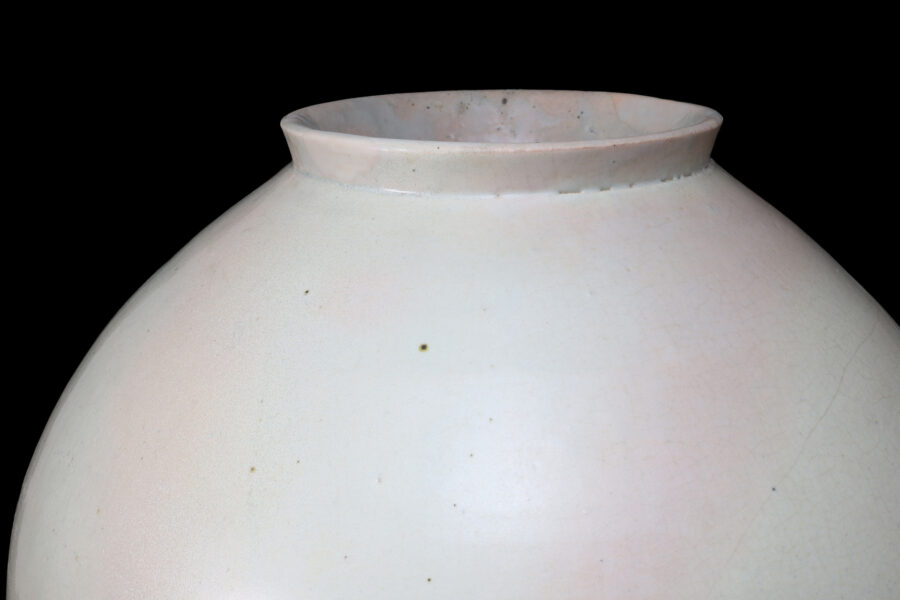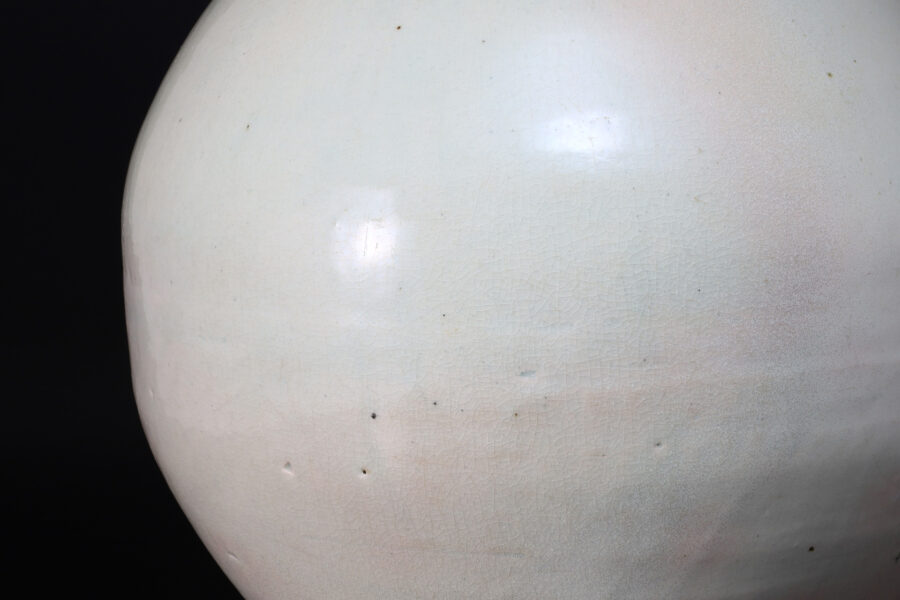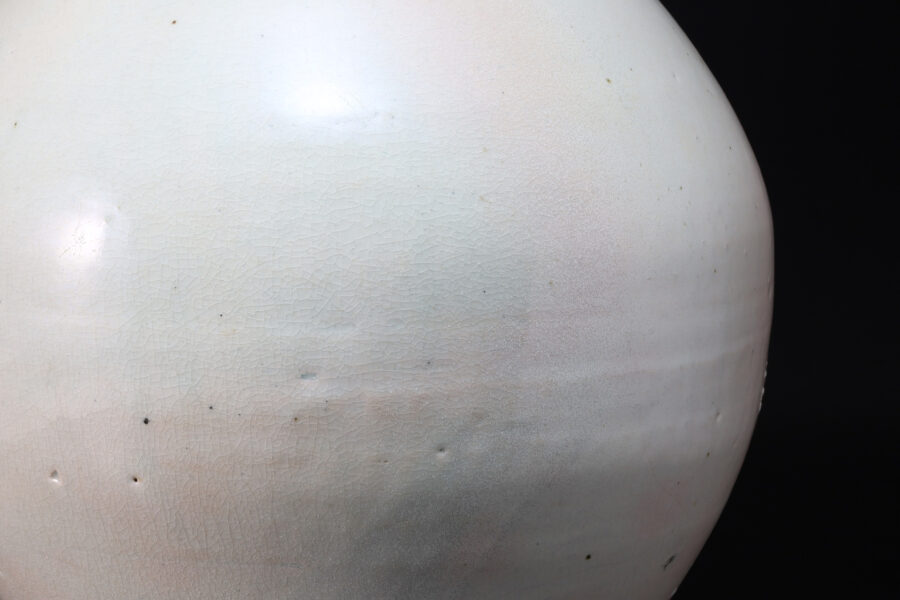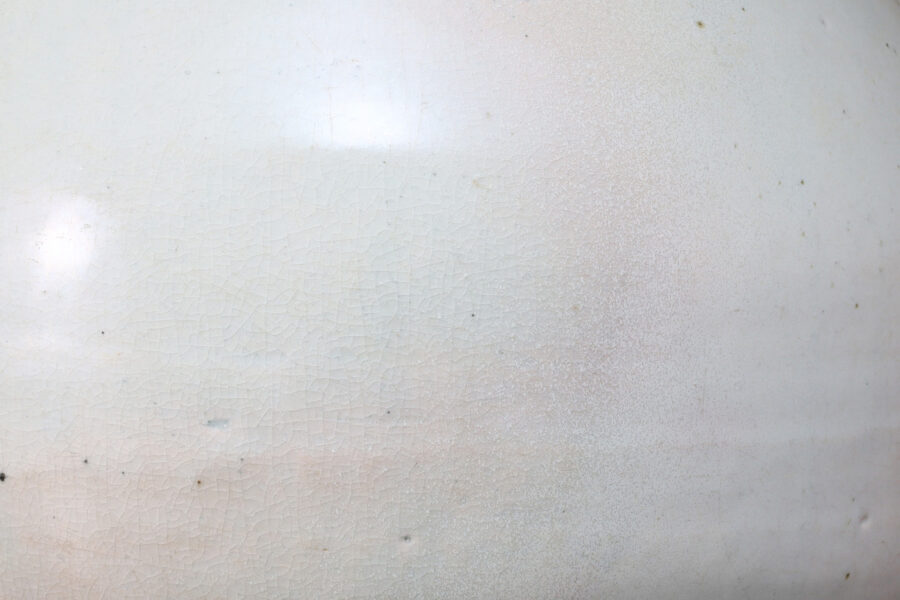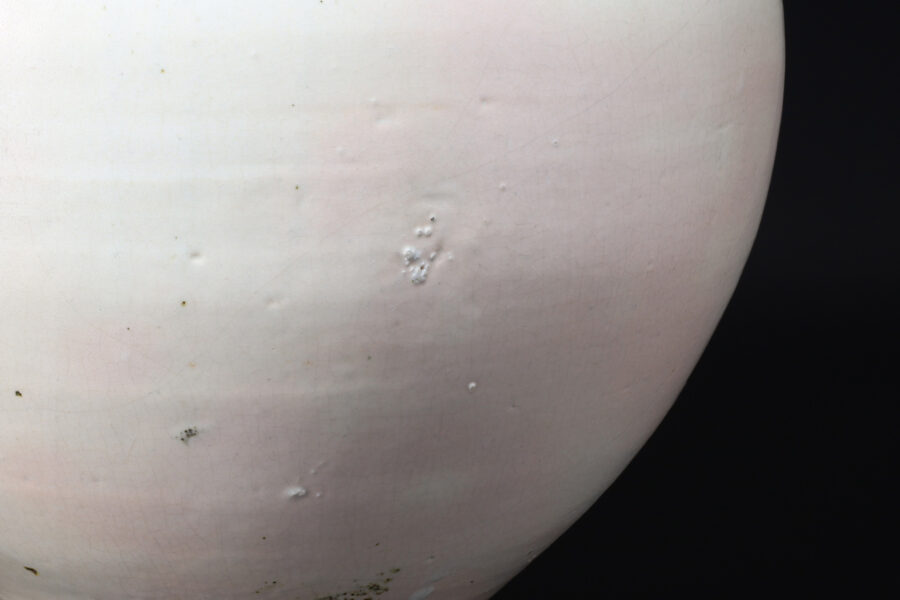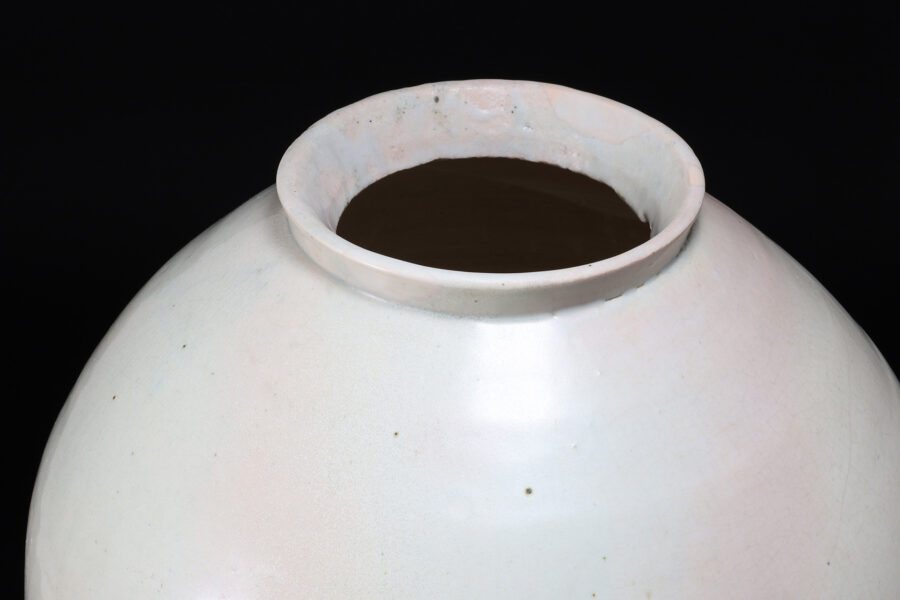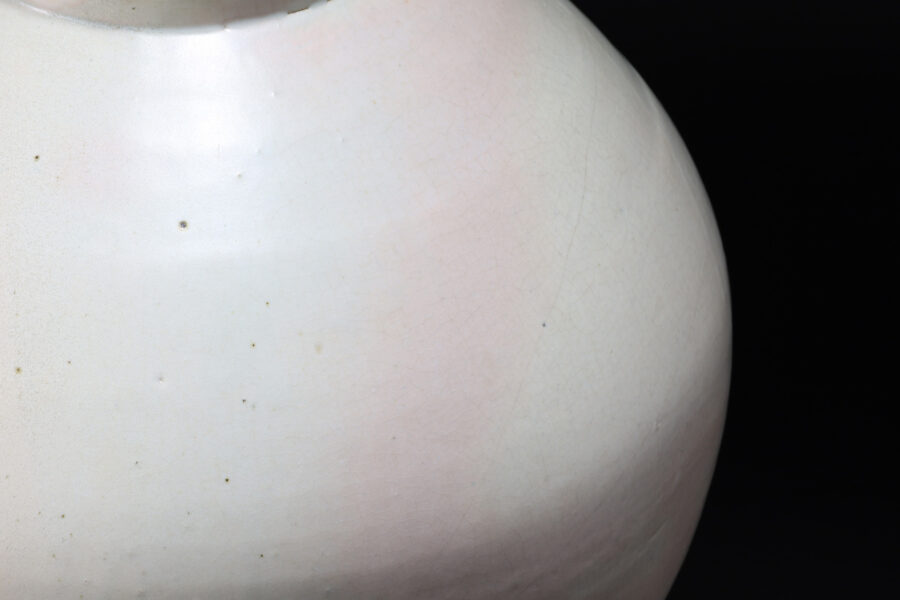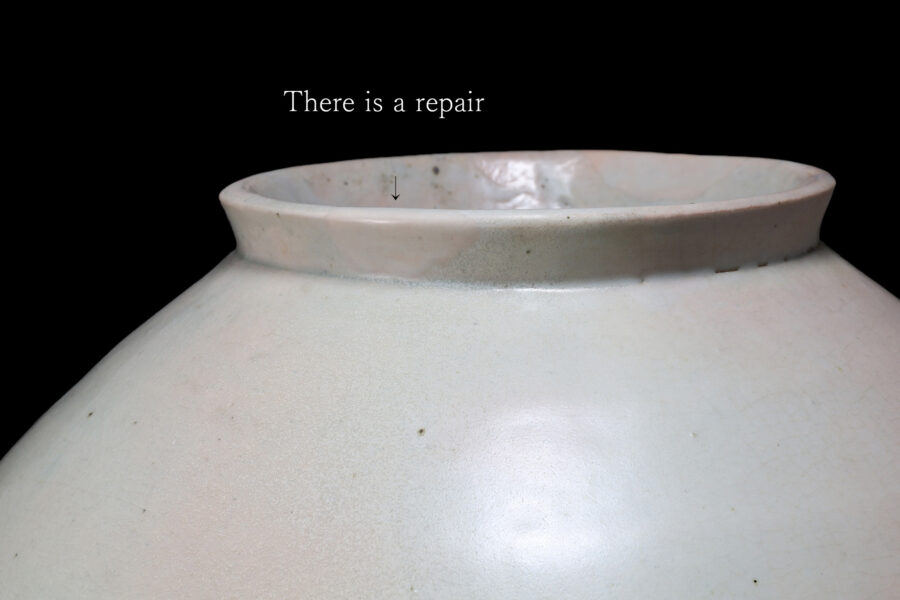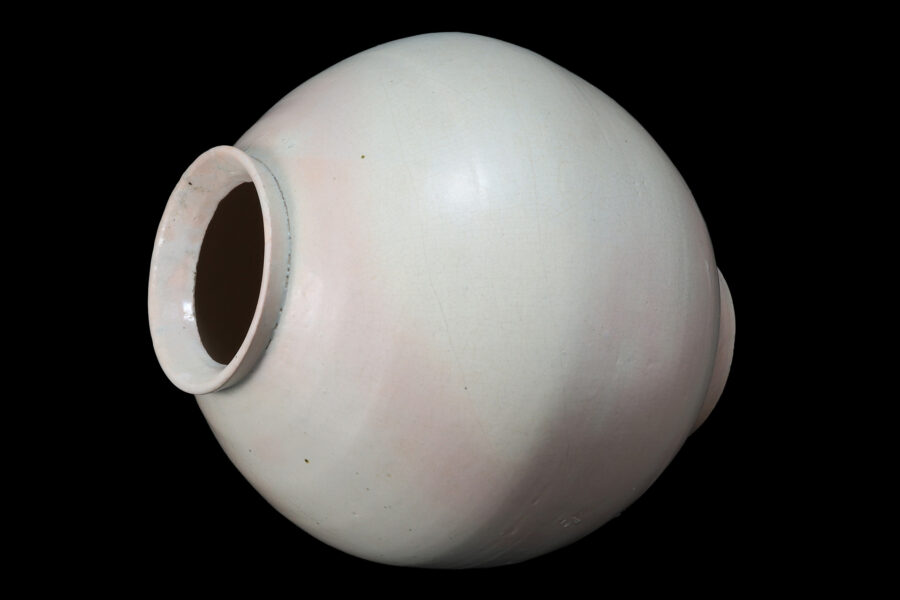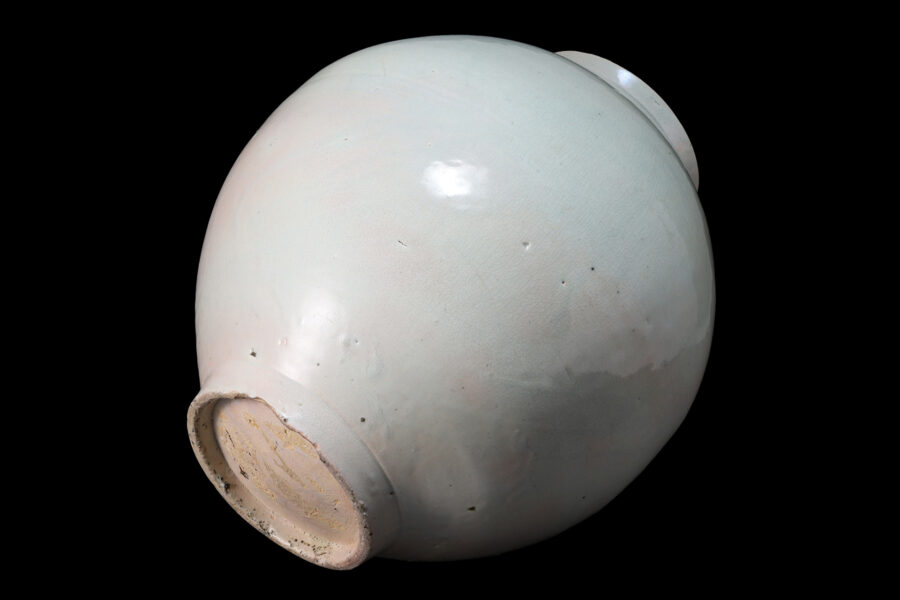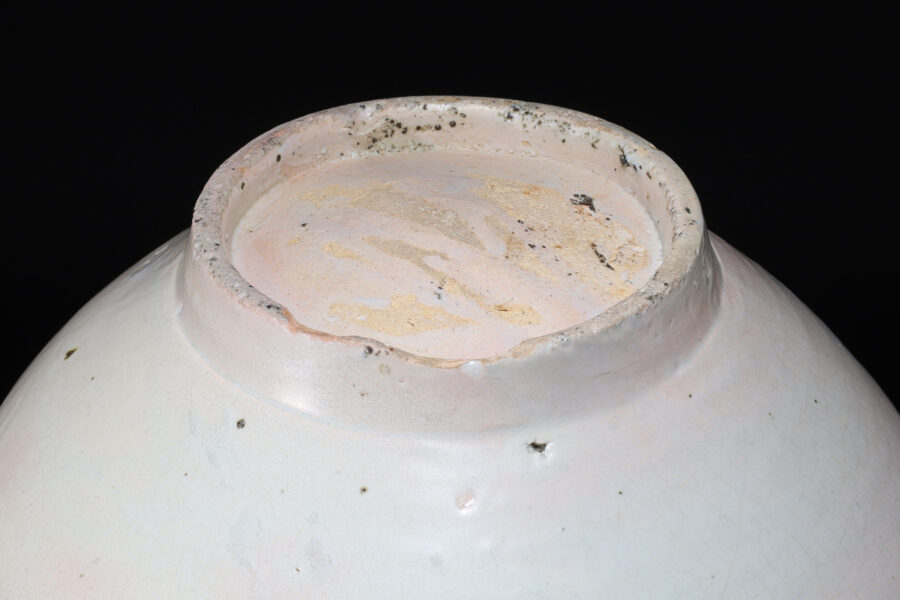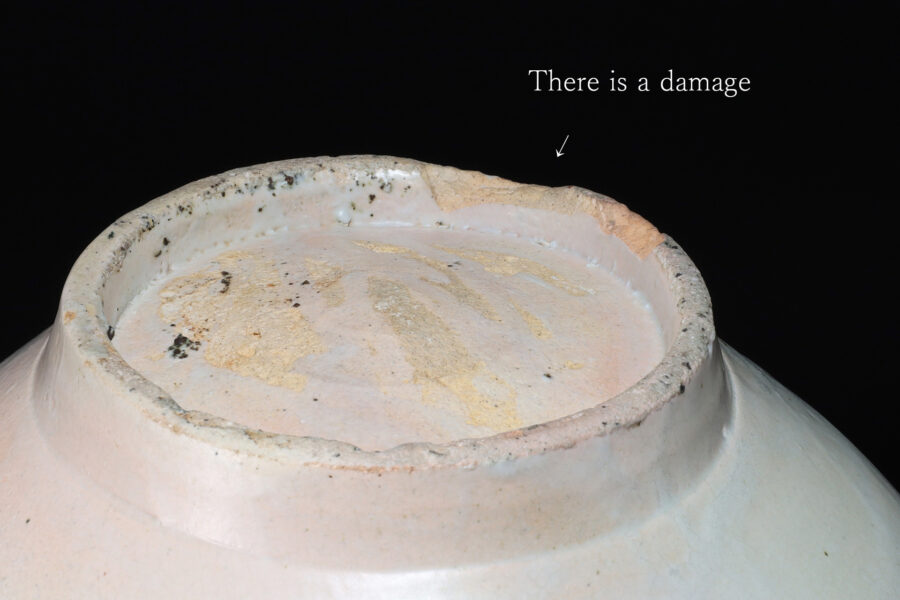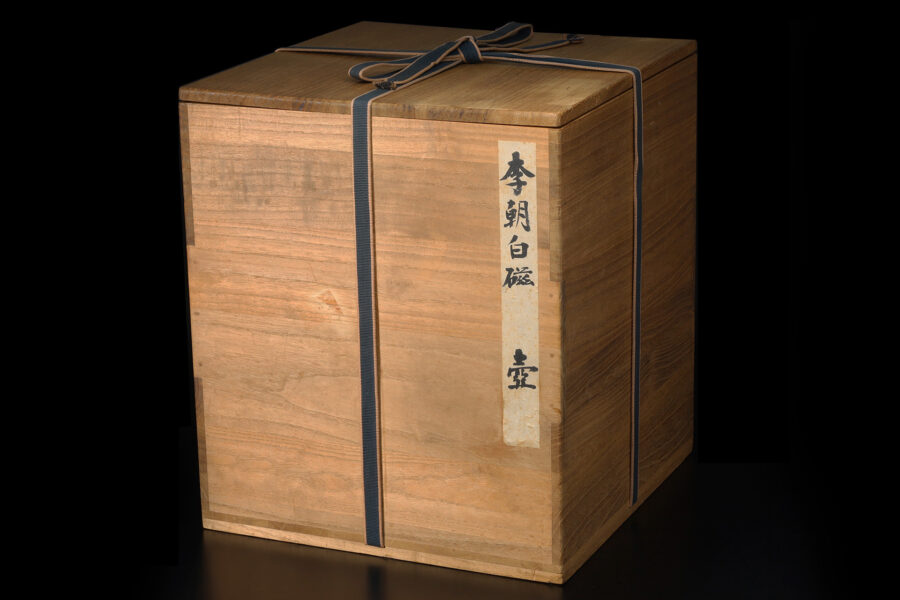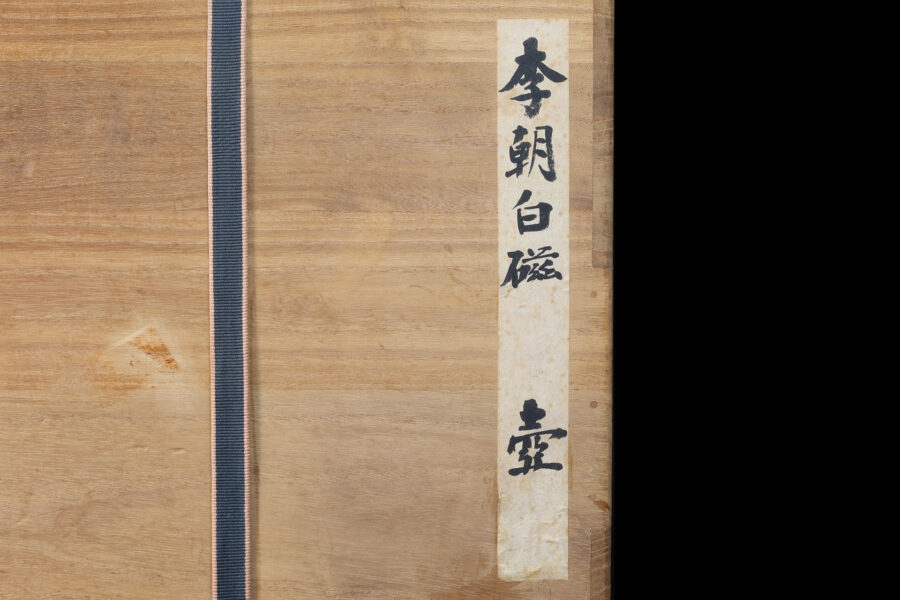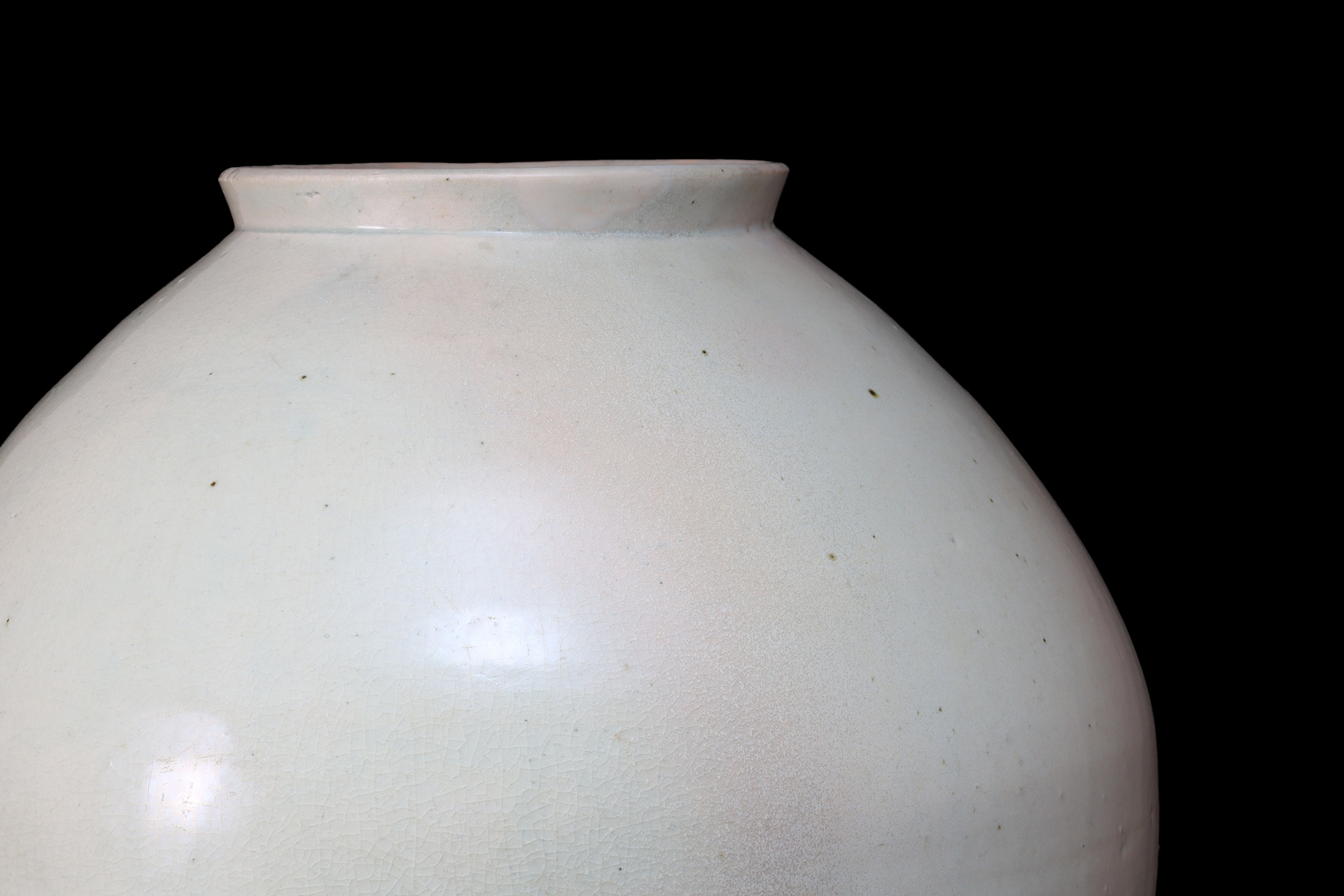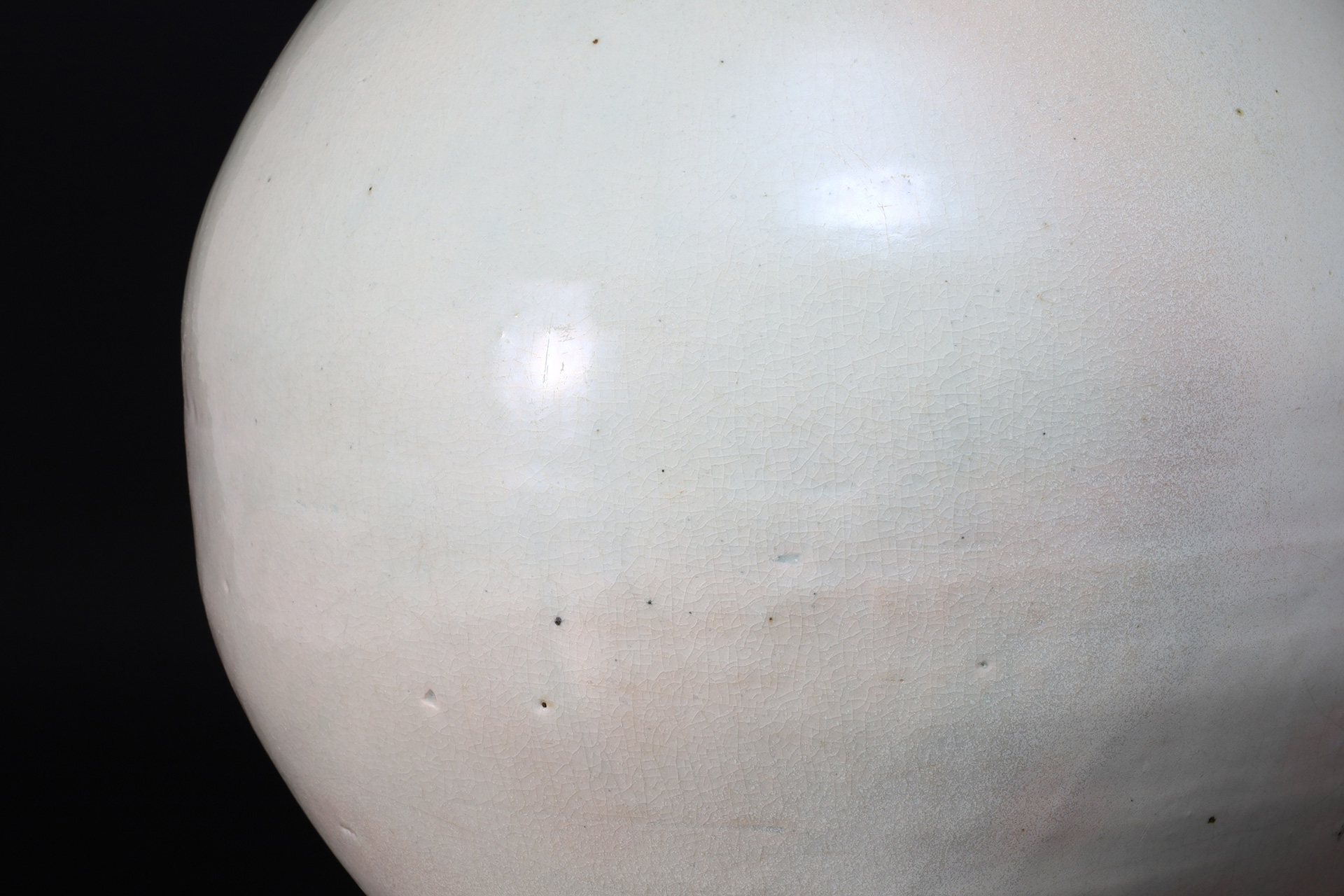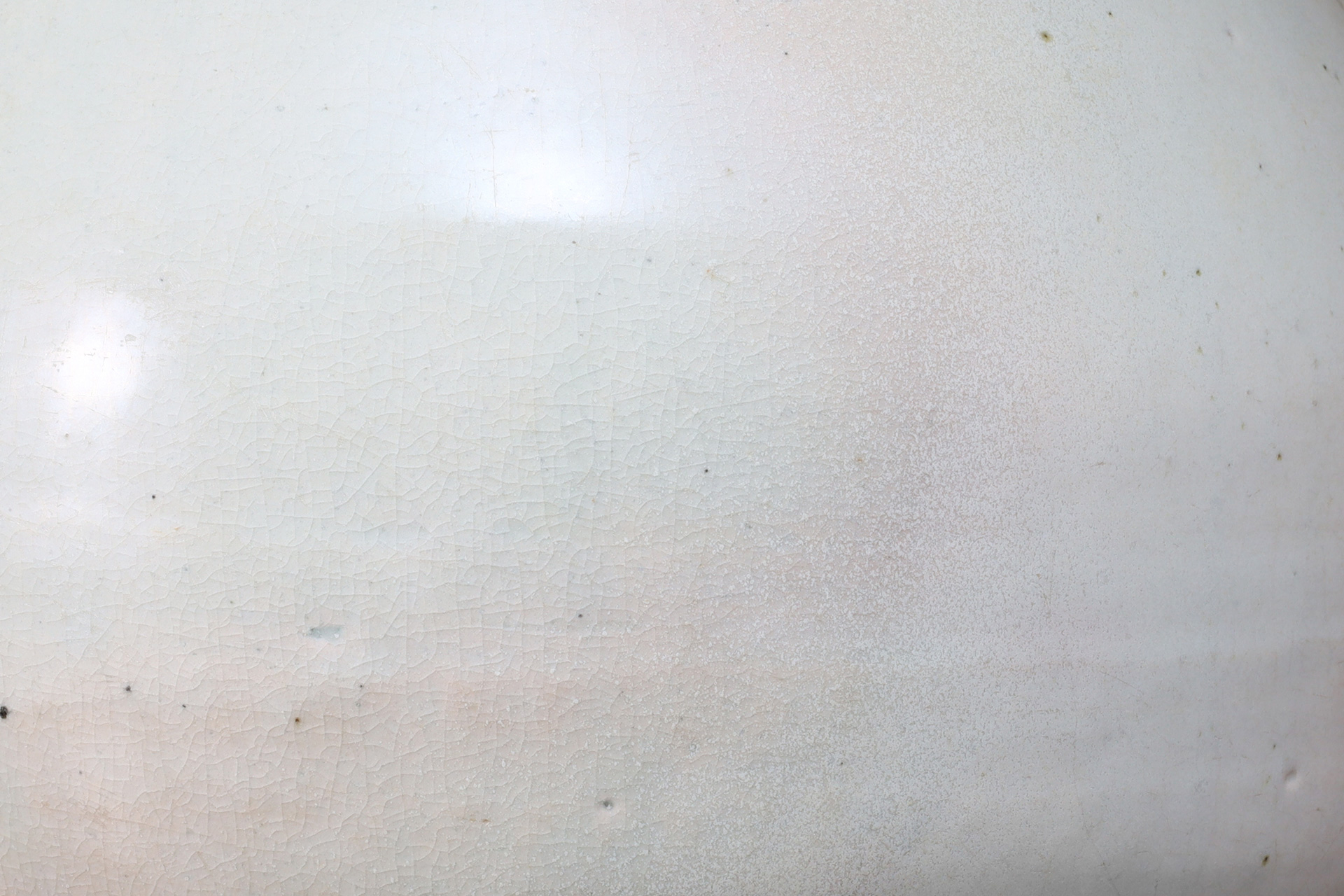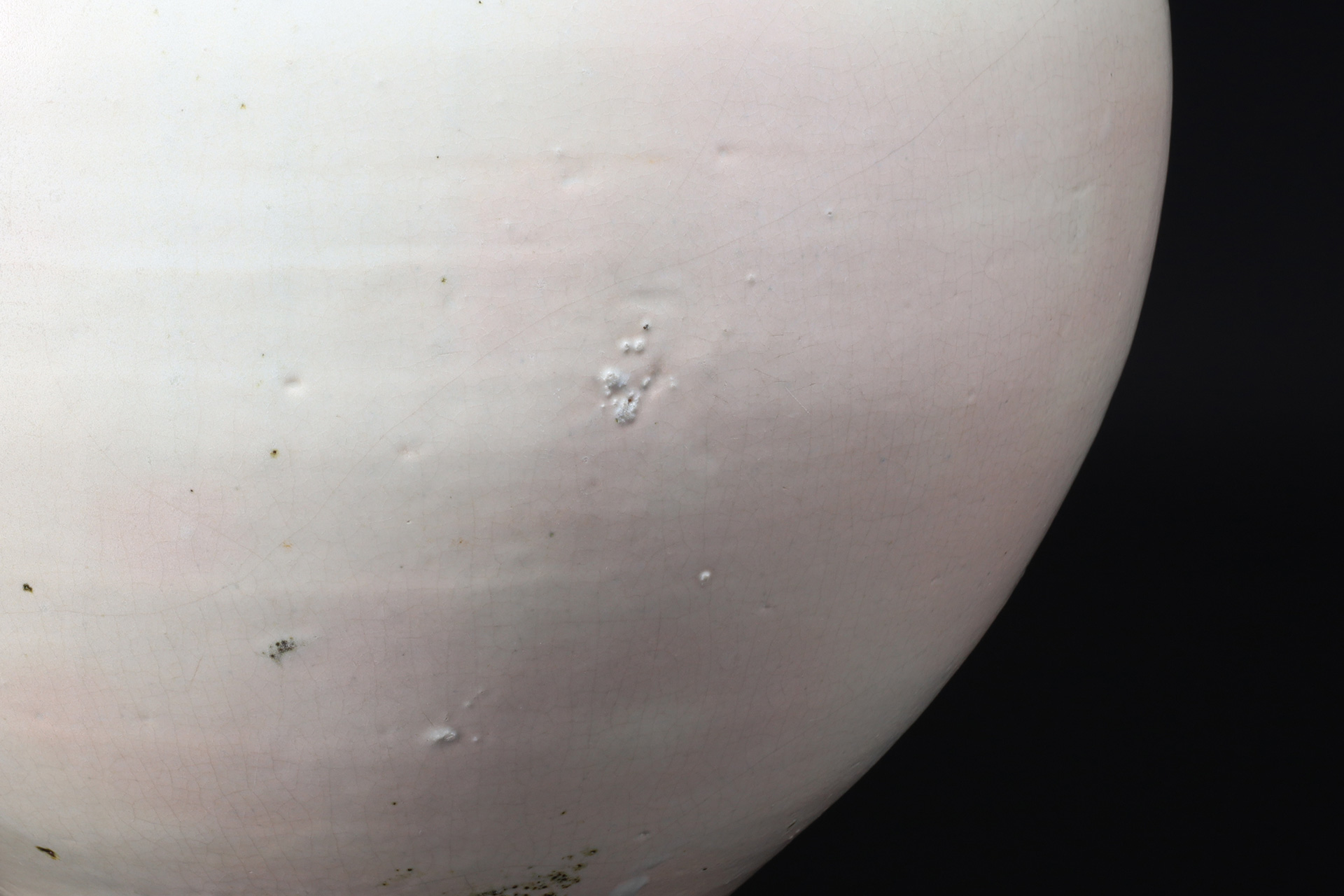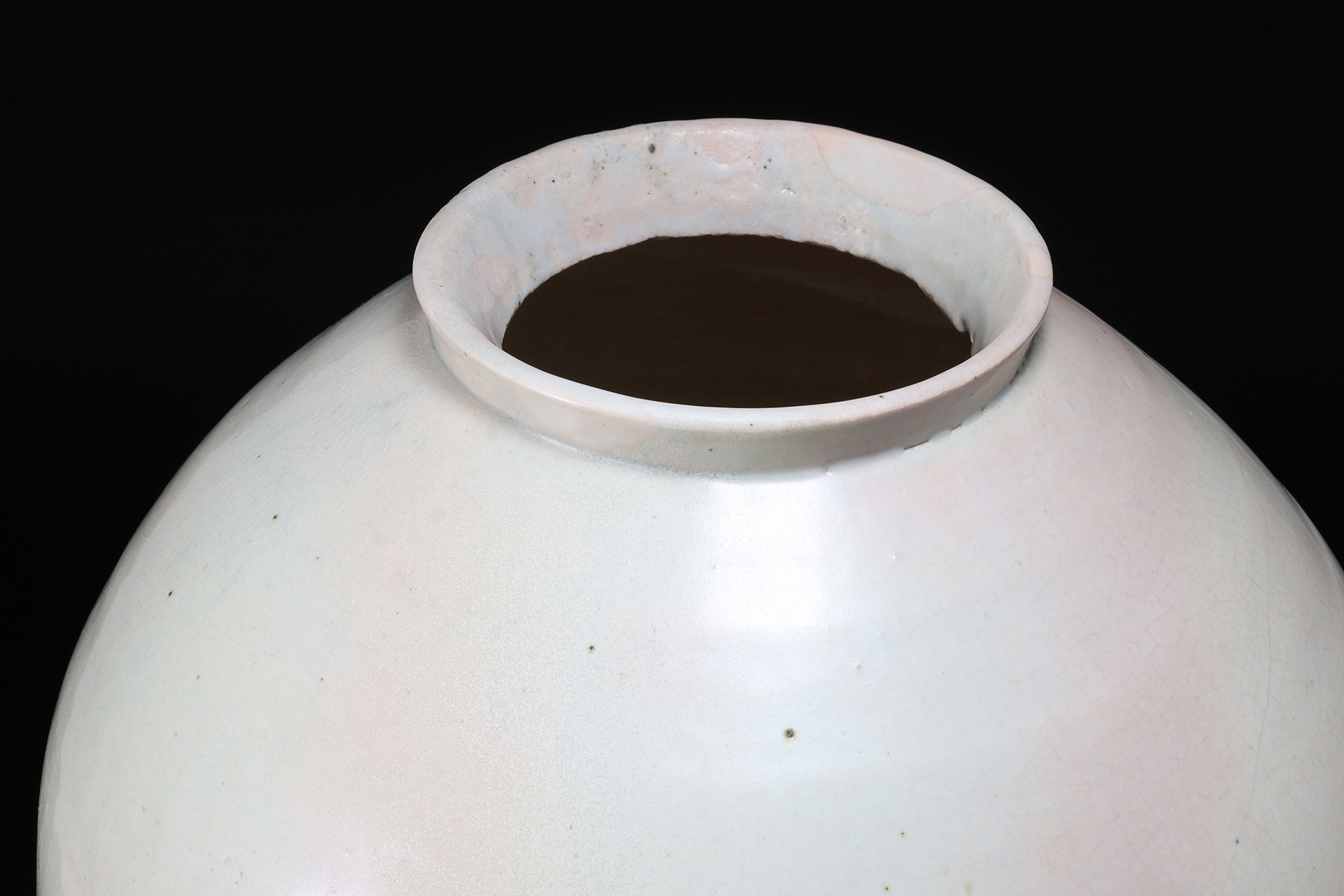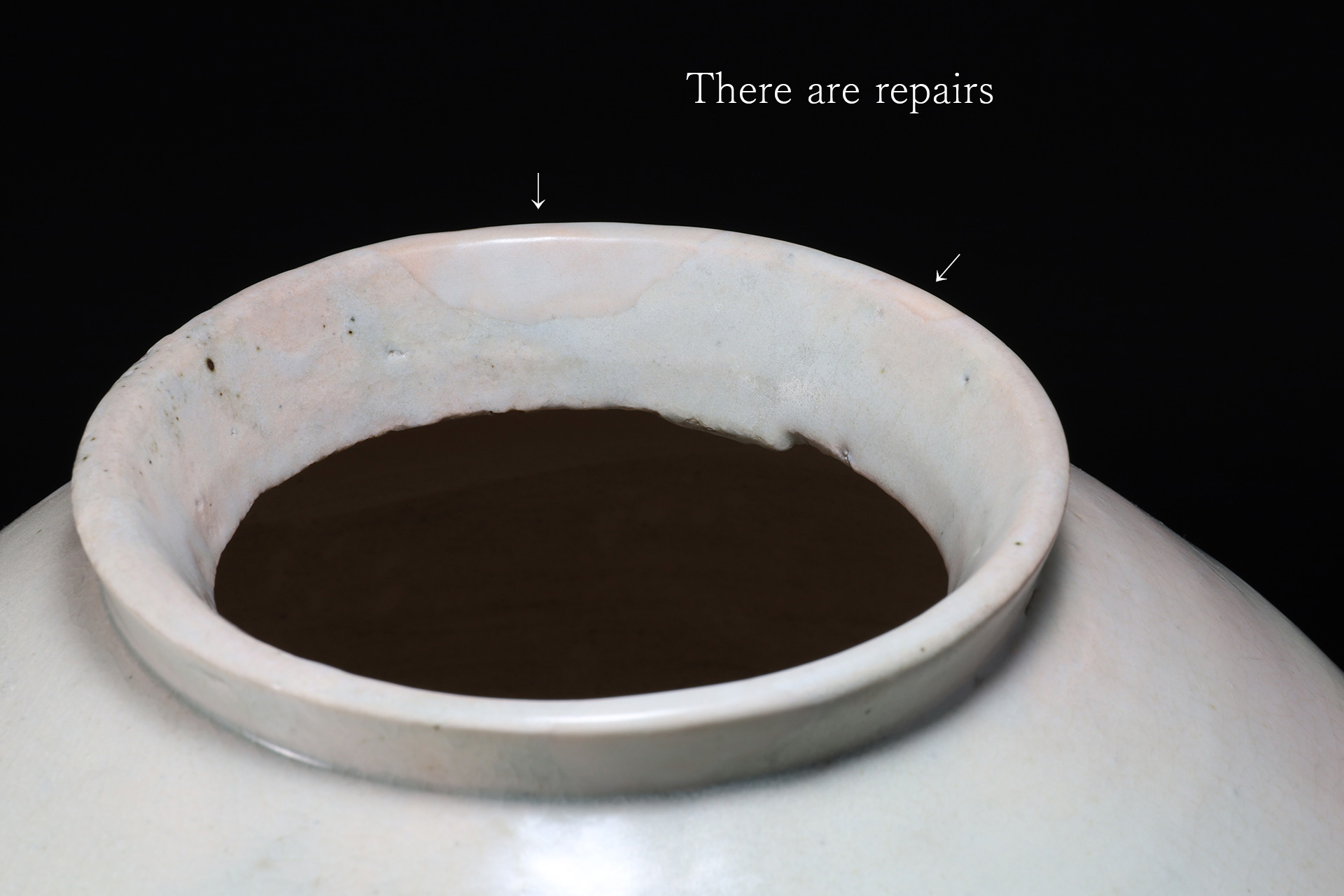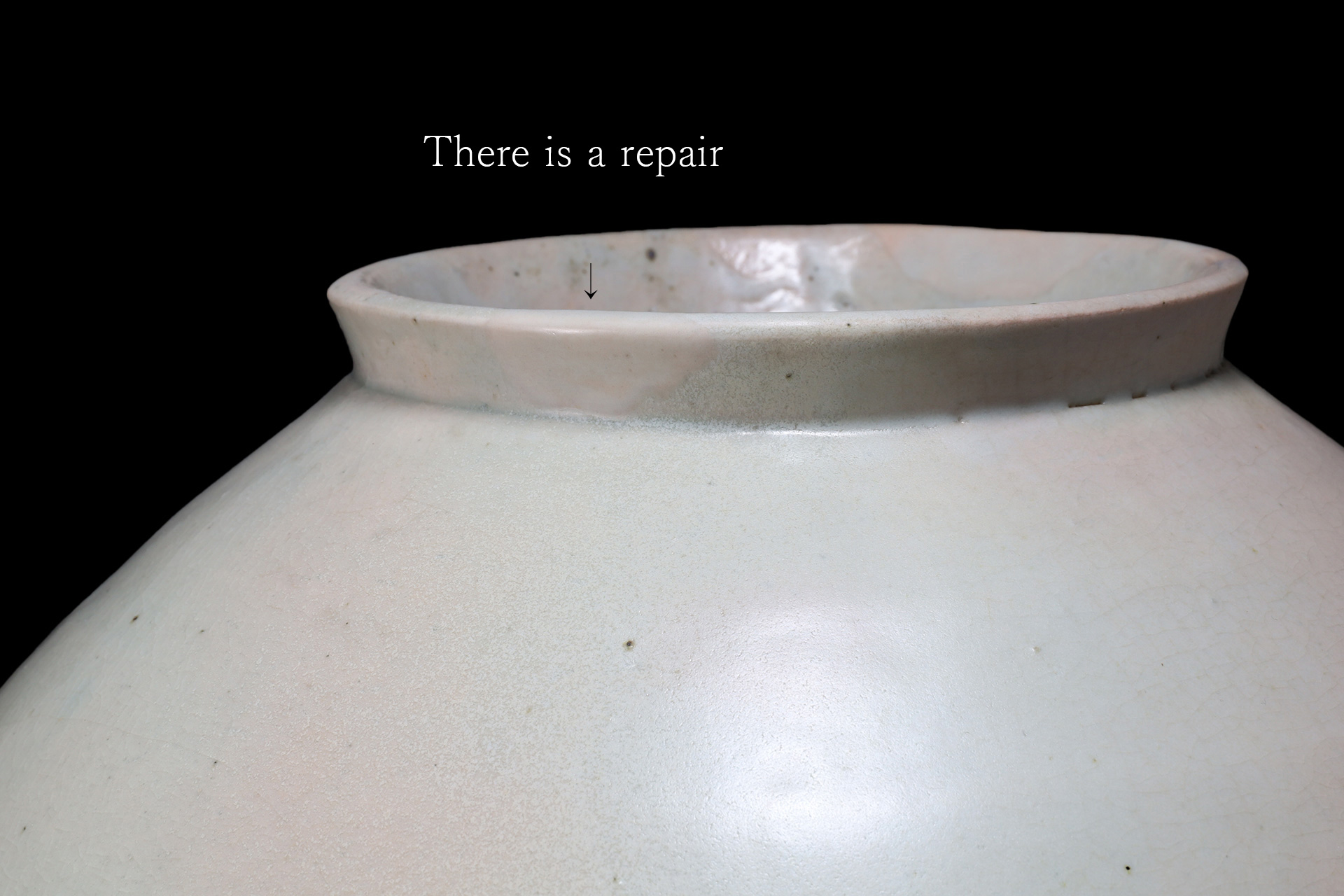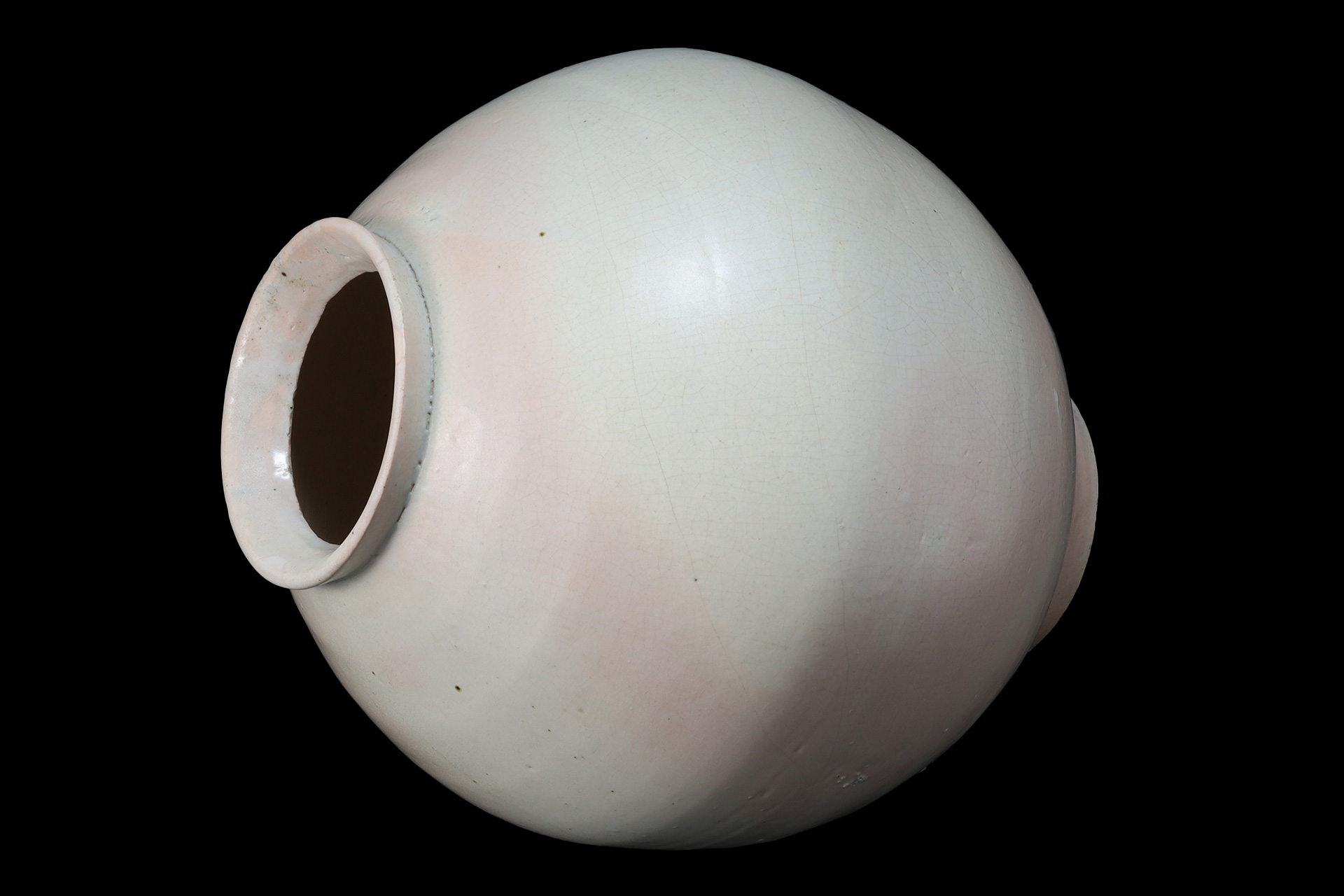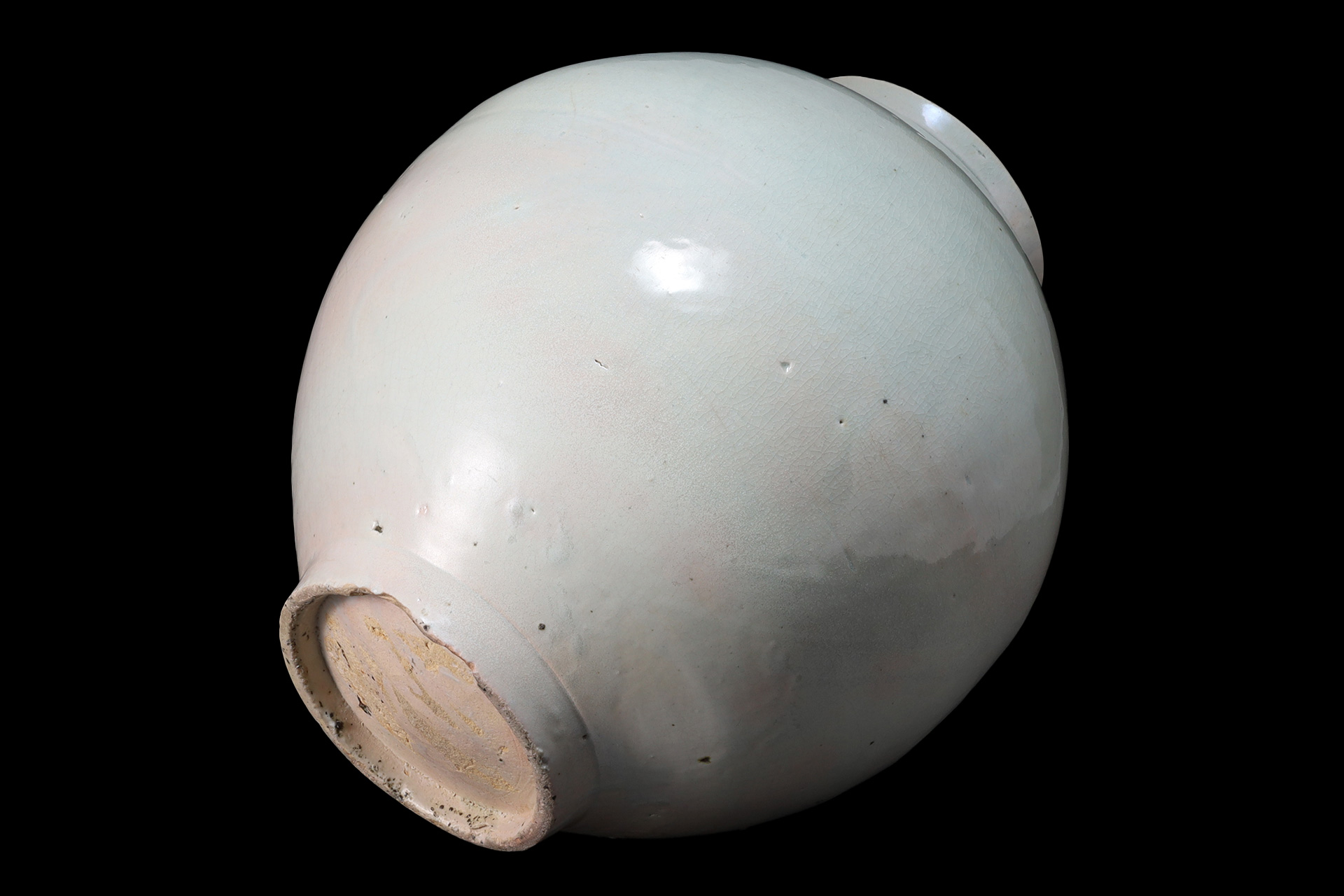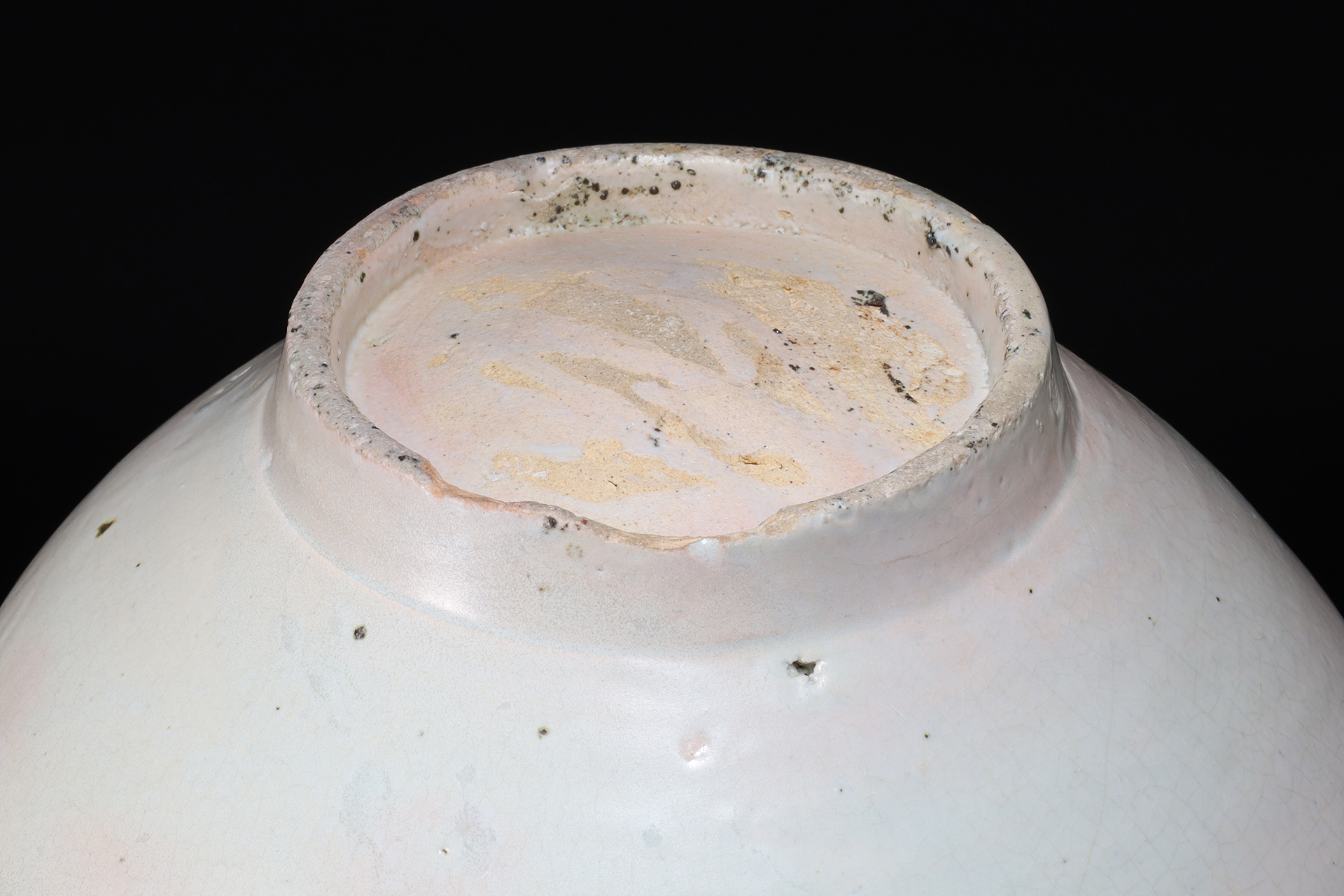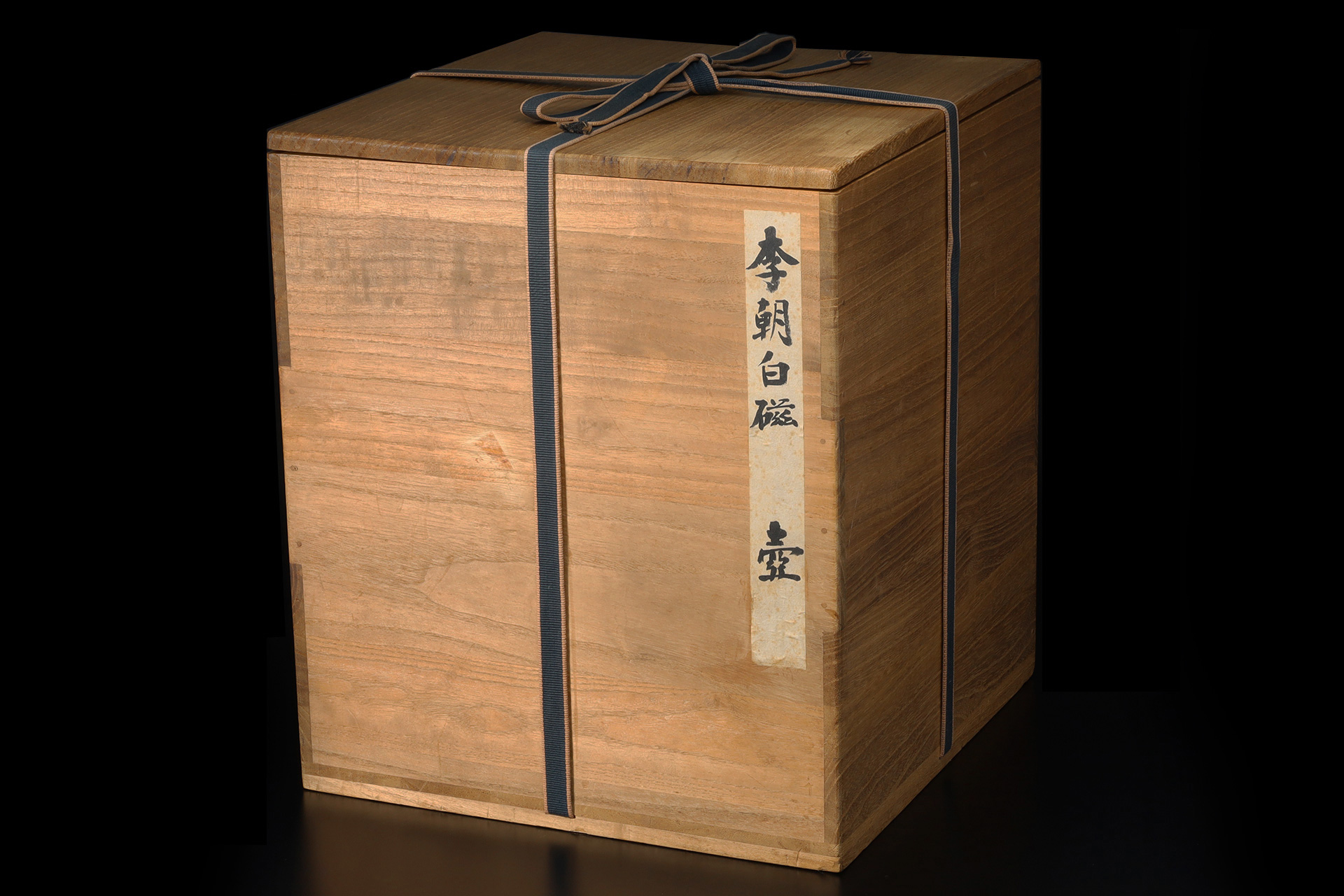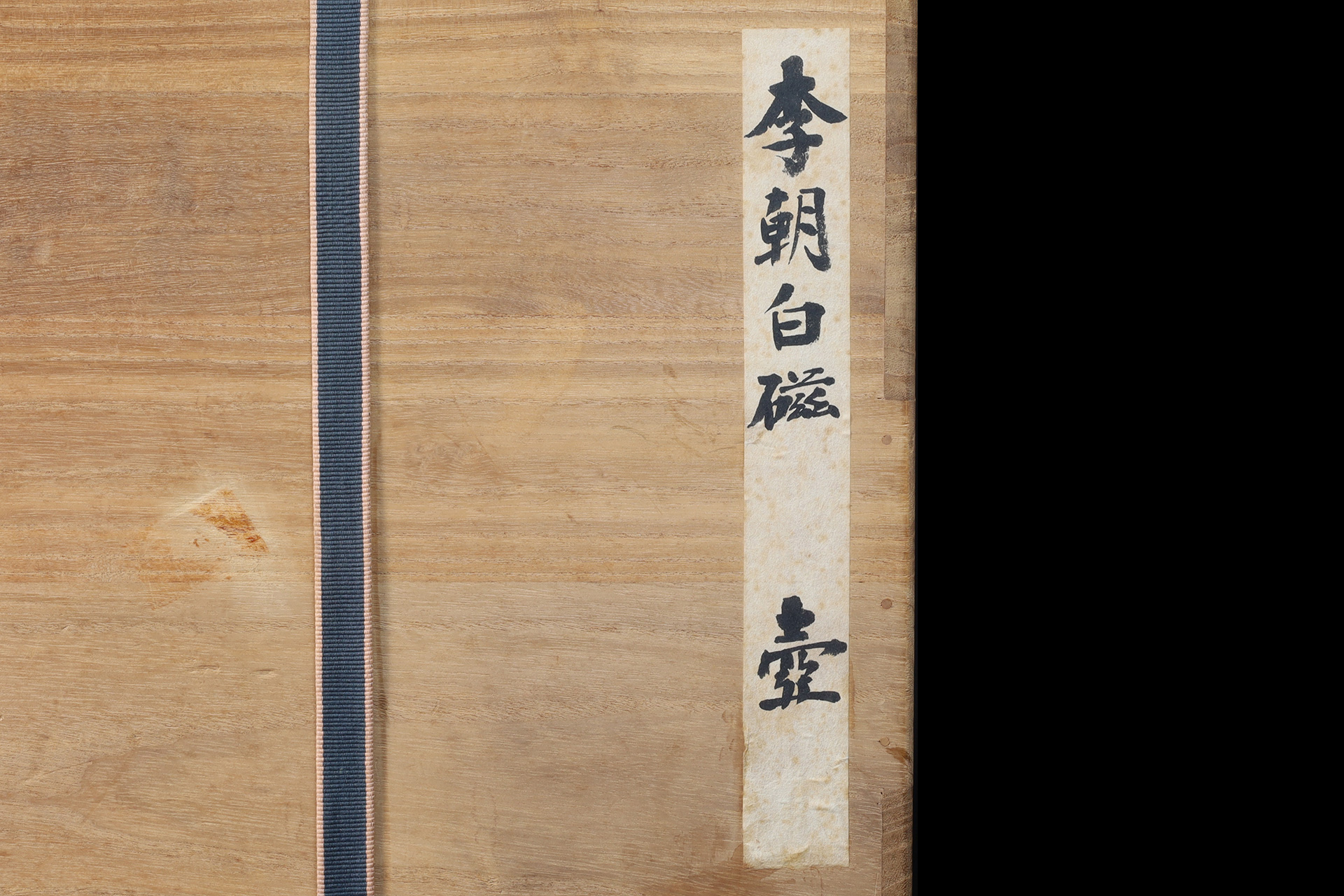This round white-porcelain jar is said to be the pinnacle of aesthetic beauty and symbolizes the joseon dynasty's aesthetic sense of purity and innocence. White-porcelain from the middle yi dynasty has a unique, rich, milky white surface due to the quality of the clay, thick glaze, and low firing. Because the clay is not hard and dense, cracks often appear on the kodai and body, and many pieces have stains(rain leaks)due to use. Its dimensions exceed 30cm, giving it a dignified and solitary presence.
- Period
- Joseon Dynasty
18th century
- Weight
- 3,980g
- Body Diameter
- 31.6cm
- Top Diameter
- 13.7cm
- Height
- 34.1cm
- Bottom Diameter
- 13.3cm
- Description
- Paulownia Box
- Provenance
- MAYUYAMA & CO., LTD.
- Condition
- There are three repairs at the edge
There is a damage at the bottom
The techniques used in the early yi dynasty to fire highly refined white-porcelain were passed on to the geumsa-ri-kiln, and by the middle yi dinasty, the grayish white-porcelain had rapidly changed to a milky white color. You can feel the warmth in the shades of the glaze, the way the flame hits it, and the uneven white color.
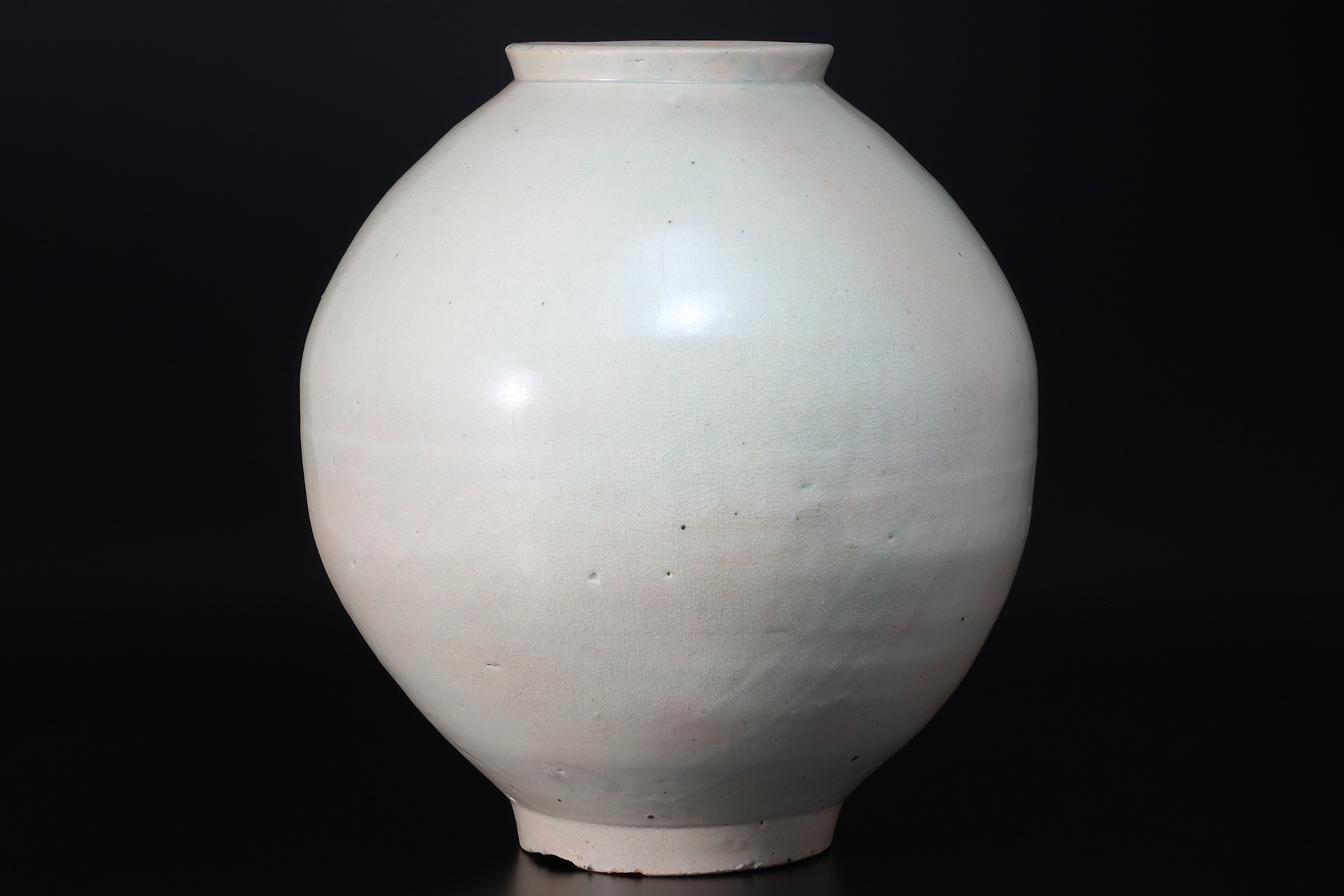
White-porcelain from the middle yi dynasty not only looks different depending on the season, but it also seems to change depending on the recipient’s mind. It is a comfort in times of sadness and a friend in times of joy.
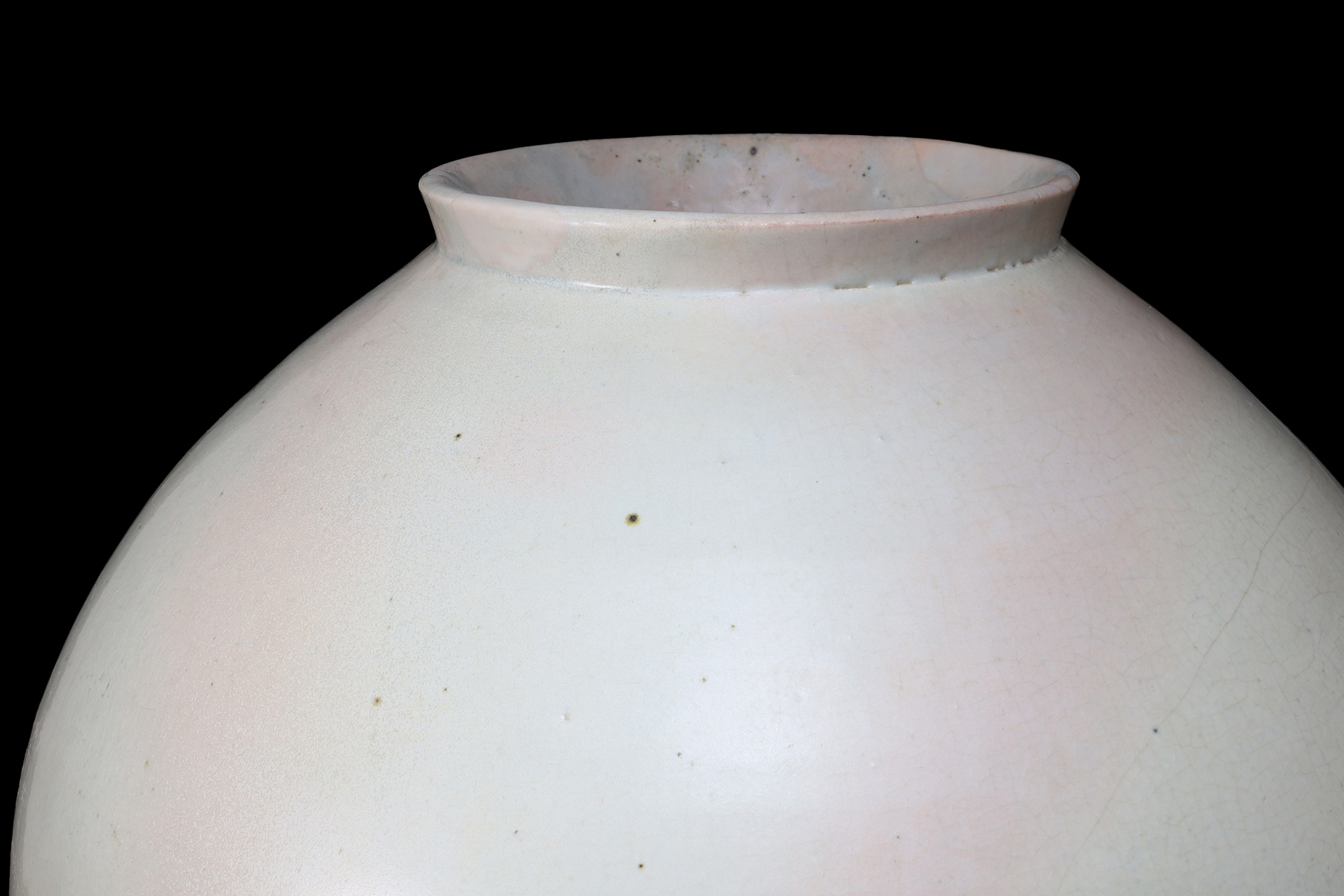
The soft curves are organic and exude the fluctuating energy of life. It is made using a technique that connects a pair of bowl-shaped components facing each other, one above the other.
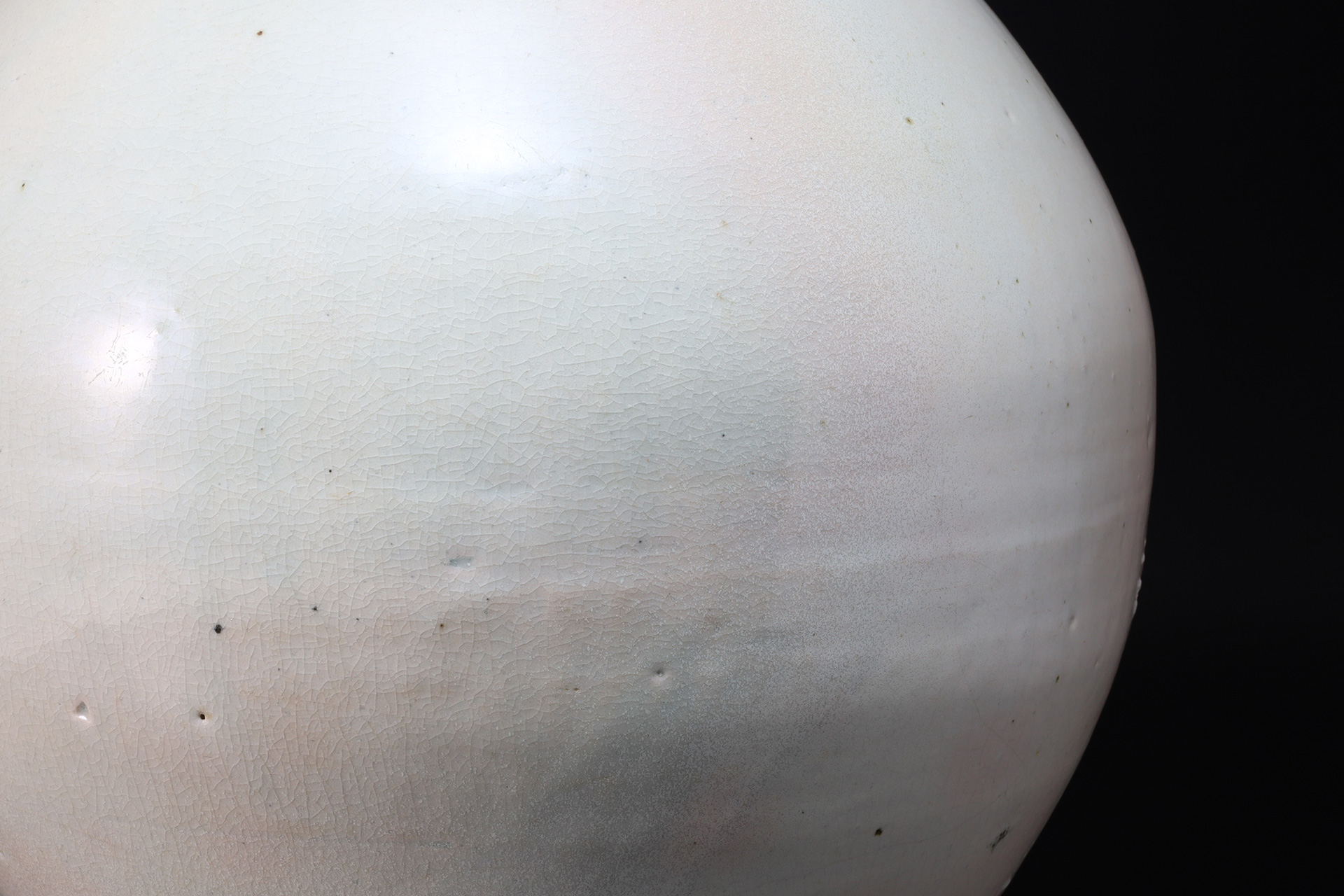
The rim is repaired to match the pale pink color.
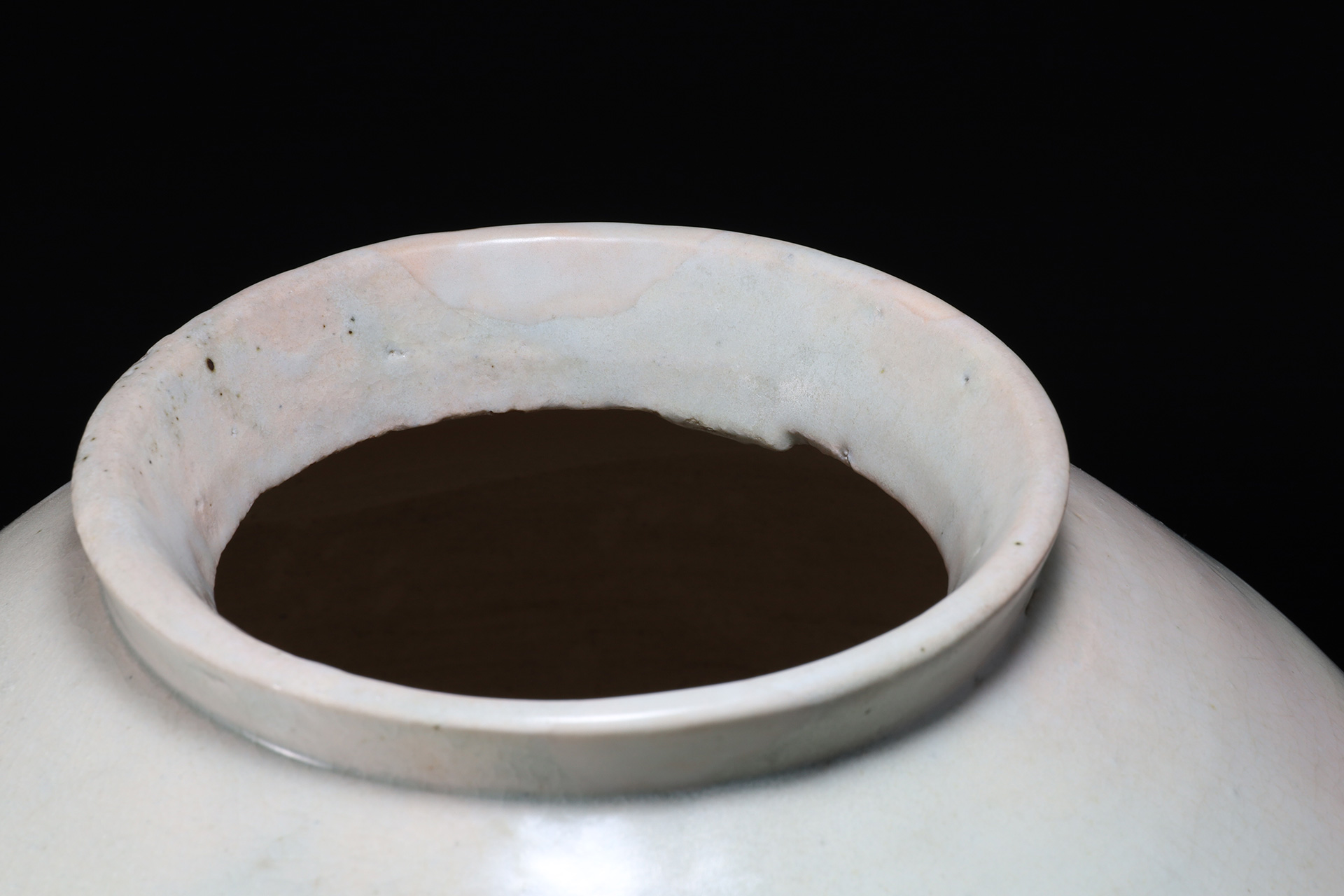
The areas where the glaze has not completely melted have a warm, faint red color, and the soft texture that absorbs light is full of the charm that is the essence of yi dynasty white-porcelain.
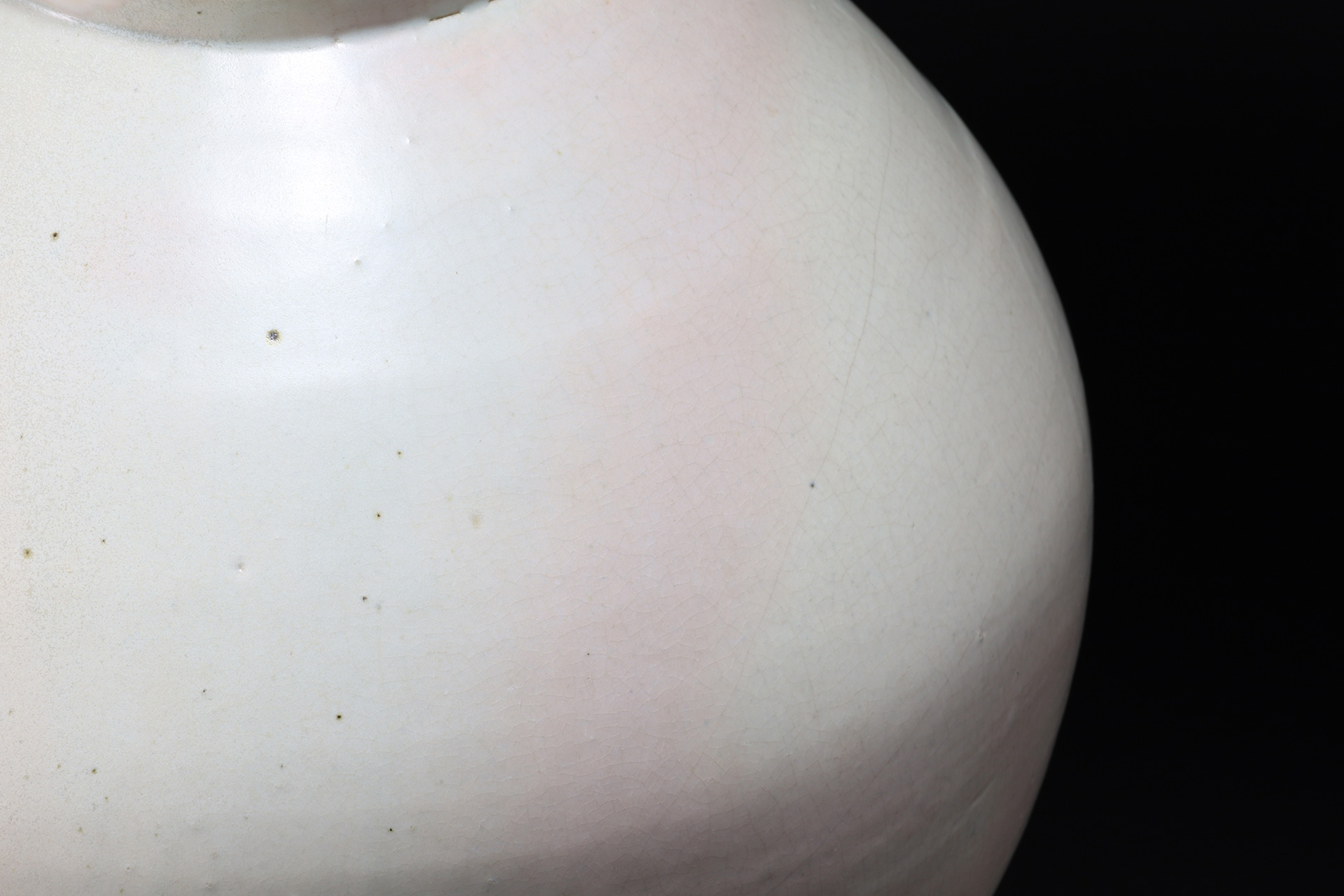
李朝
李氏朝鮮とは1392年に李成桂が朝鮮半島に建国した朝鮮最後の統一王朝です。
国号は李成桂が明国王に認知を求め、1393年に採択した経緯があります。
「李朝」の呼称は日本において定着し、長く用いられています。
高麗時代の仏教が衰え、抑仏崇儒政策が推し進められると、
儒教の精神は人々の生活の規範として深く浸透し、
清廉潔白を崇め、醇朴で倹素な気風を養う事が理念とされました。
儒教の普及と共に祭祀も宮廷から一般庶民に至るまで盛大に行われ、
「白」は神聖と簡素を旨とする清浄無垢な色として祭器においても白磁が珍重されました。
白磁を母体に染付、鉄砂、辰砂等の装飾が生まれていきますが、
節用を重んじた体制下では最後まで色絵が焼成される事はありませんでした。
日清戦争(1894~1895)後の1897年に国号を「大韓」と改称しました。
日露戦争(1904~1905)後は日本の保護国となり、1910年の韓国併合で滅亡しました。
李朝陶磁への深い理解と愛情を持ち、社会的に広く認識させる力を発揮したのは、
浅川伯教と巧の兄弟であり、その兄弟の手引きによって心を傾けていったのは柳宗悦でした。
https://tenpyodo.com/dictionaries/korea/
李朝白磁
温和な表情に静寂な雰囲気を漂わせる李朝白磁は東洋陶磁の極地です。
朝鮮王朝の為政者は白磁への関心が強く、
王家や官庁の御器にも清廉潔白を尊ぶ儒教精神と共に深く根付いていきました。
「白衣民族」として清楚で慈愛に満ちた美しい白色を愛し、
硬い灰白色、失透性の乳白色、青白色、千差万別の白に多様性があります。
